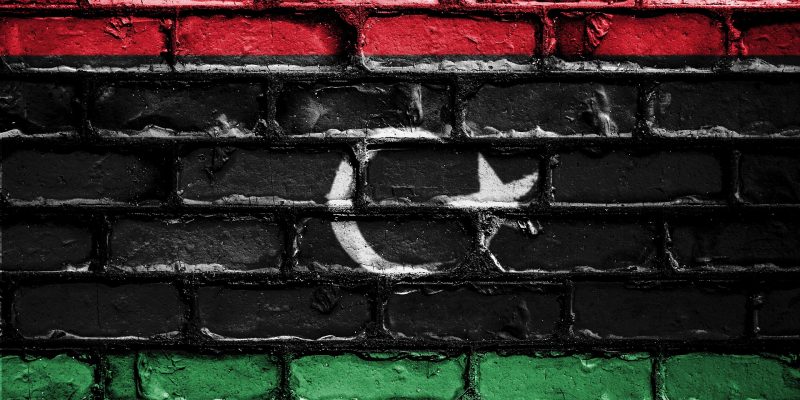1. The code of mass distraction
“Five NGOs out of eight have signed the Interior Ministry code of conduct”, the newspapers report, and the message is clear: the government is winning the battle on the rules to follow at sea. No one is reporting how the contents of the code have been radically altered (under pressures from SOS Méditerranée, the fifth NGO to sign) to become “a useless paper that does not change an iota of the previews rules, the rules of international law, the rules of the sea”. Suddenly the two most controversial points have disappeared: the obligation to have armed officers on board and the ban on transfers of rescued migrants on other boats. Why so much noise then? Read Valerio Castaldi’s article on the “code of mass distraction” and the “art of blaming NGOs to conceal the hell where we want to send migrants”. Also read Fabrizio Gatti’s op-ed in L’Espresso, explaining the ultimate goal of the smear campaign against NGOs: giving Libya total control over the Central Mediterranean route.
2. Libya’s threats, humanitarian NGOs halt rescue operations
Meanwhile, Libya has claimed total control of its SAR zone (which has been expanded indefinitely), threatening NGO vessels carrying out rescue missions unless they stay out of it. Read the article in the Huffington Post, as well as Sergio Scandura’s article in Stati Generali.
“The EU is giving Libya a free hand, we will not be complicit”: MSF is the first NGO to announce the suspension of rescue missions at sea, followed closely by Sea-Eye and Save the Children. MSF mission coordinator Stefano Argenziano spoke with Repubblica about the reasons behind the suspension, while this article on humanitarian NGOs explains how hindrance of humanitarian assistance will create a deadly gap in the Mediterranean. Further reading in Il Post and Deutsche Welle.
3. The Libyan hell where we want trap migrants
They call them “reception centres”, but they should be called inhuman prisons, if not concentration camps. These are the places where we want to trap migrants in Libya, as long as we keep them off our coasts. Reporter Francesca Mannocchi brought her investigation on the TV show In Onda and to the pages of L’Espresso, denouncing the collusion between people smugglers, armed militia and the Libyan Coast Guard. Also read her report from a few months ago and the more recent one by Domenico Quirico in La Stampa, as well as our own in-depth analysis of the Libyan situation with Nancy Porsia. Because tomorrow we won’t be able to say we didn’t know.
4. Italy – Libya, a return to dark times, ASGI warns
The latest steps taken by the Italian government to stop refugees from Libya may be in serious violation of international laws and mark a return to a dark time (which had already cost Italy a condemnation by the European Court of Human Rights). Read the warning by the Association for Juridical Studies on Immigration (ASGI).
5. Why we need to make a stand on the NGOs rescuing lives at sea
Why it is imperative to make a stand on the moral and political issue of rescue operations at sea. Read the op-eds by Gustavo Zagrebelsky in La Stampa, Ezio Mauro in Repubblica, Patrizio Gonnella in Manifesto, Roberto Saviano and Tommaso Cerno in Espresso.
6. The anti-refugee ship that was offered helped by a refugee rescue boat
A story about a Generation Identity ship became viral earlier last week when the C-Star experienced an engine breakdown while out at sea and was unable to move. The MRCC dispatched the closest vessel to help, which was a refugee rescue boat. The Identitarians refused all help, but the story had already broken on the Internet and become the joke of the summer. Read about it in Il Post and Buzzfeed.
7. The importance of giving dead migrants a name
Meanwhile, people are still dying at sea, and some are doing the important work of giving a name to those dead. Read Barbie Latza Nadeau’s story in Scientific American (as well as our own report on the Tunisian fishermen who bury nameless migrants).
8. The strange case of Chinese asylum seekers in Italy – from Milan to Rome
More and more people are fleeing from Beijing. Chinese asylum seekers in Italy are on the rise – from Milan (as we told in our own reportage) to Rome, as told by Annalisa Camilli in Internazionale.
9. What is left of Calais
Since the evacuation of the “Jungle”, things for migrants and refugees in Calais have only been getting worse. Amelia Gentleman’s report in the Guardian describes an extremely precarious situation, and daily instances of abuse, in the French border town. (Also read our in-depth story from a few weeks ago.)
10. The midnight train to Moscow
A story that no one had told before and that everyone should read: Joseph Schottenfeld’s report for Foreign Policy takes us on a night train to Moscow, for a journey with migrant workers from Central Asia heading for Russia.
Translation by Francesco Graziosi.
Header photo: Libyan flag – via Pixabay (CC BY 2.0).









